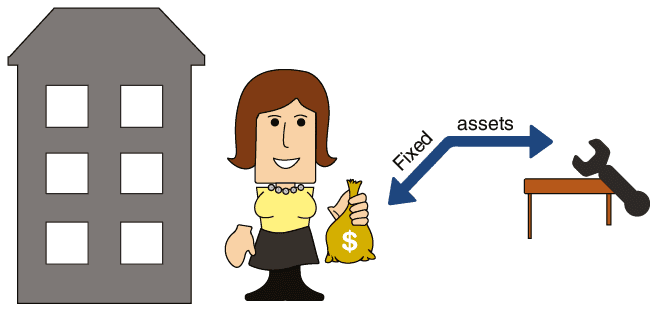A company’s assets are usually divided into two main groups (each of which has subgroups):
Current Assets – This group includes both cash and other assets scheduled to become cash as part of the company’s regular activity. These assets consist mostly of cash, inventory (which will be sold for cash), and Accounts Receivable (customers who will pay their debt in cash at the proper time).
Non Current Assets or Fixed Assets – These assets are not expected to become cash in the course of the company’s regular business activities, for example, machinery, computers, office furniture, and land owned by the company.

Current and Non Current Liabilities – Explanation
The company’s liabilities are usually divided into two main groups.
Current Liabilities (Also Called Short-Term Liabilities) – these are liabilities that the company must pay within a year, including:
-
Accounts Payable – usually, when a company receives merchandise from a supplier, it undertakes to pay for it within 1-2 months. Until this debt has actually been paid, it appears in the balance sheet under short-term liabilities.
Bank loans that the company must repay within a year are also listed under current liabilities.
Non Current Liabilities or Long-Term Liabilities – these are liabilities that the company must repay, but not during the next year, for example a 10-year bank loan.
In the following example, it can be seen how a balance sheet looks when the assets in it have been divided into two main types – Fixed assets and current assets; while liabilities have been divided into two main types – Current liabilities and Non Current liabilities.
Chess Pizza Balance Sheet as of December 31, 2008 ($)
|
Assets |
Liabilities + Equity |
||
|
Current Assets |
Current Liabilities |
||
|
Cash |
3.500 |
Accounts Payable |
4,000 |
|
Inventory |
4,000 |
Total current liabilities |
4,000 |
|
Accounts Receivable |
2,500 |
|
|
|
Total current assets |
10,000 |
Non Current liabilities |
|
|
|
|
Bank loans |
6,000 |
|
Fixed assets |
Total Non Current liabilities |
6,000 |
|
|
Equipment |
6,000 |
|
|
|
Furniture |
4,000 |
Equity |
|
|
Building |
10,000 |
Share capital |
15,000 |
|
Total fixed assets |
20,000 |
Retained earnings |
5,000 |
|
|
|
Total equity |
20,000 |
|
|
|
|
|
|
Total assets |
30,000 |
Total |
30,000 |









